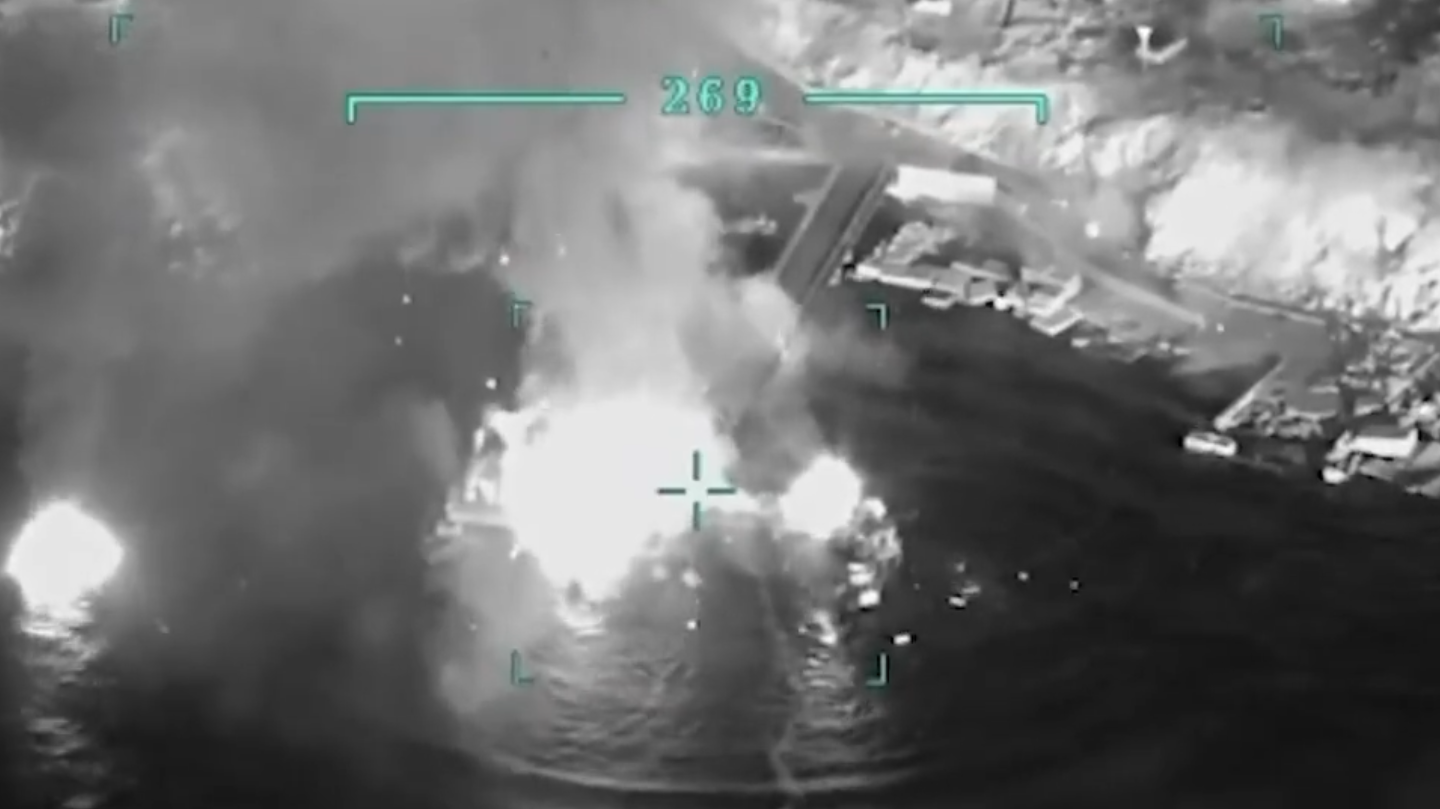The bombardment of Snake Island didn’t end when the Russians evacuated the relatively small rock located about 22 miles out to sea from Ukraine’s southwestern-most coastline.
On July 1, the Russians attacked Snake Island in an apparent effort to destroy equipment left behind. Later that day, it was Ukraine’s turn, hitting the island with strikes from Bayraktar TB2 drones:
The Russian effort was apparently to keep the weapons, which were newer models, from falling into Ukrainian hands, Andrii Ryzhenko, a retired Ukraine Navy captain and former member of that nation’s general staff told The War Zone Tuesday. The Ukrainian attack, he said, was an effort to destroy some remaining equipment the Russians were apparently trying to retrieve.




On July 1, Russians hit the island with phosphorous bombs, said Ryzhenko, destroying at least four Pantsir and three Tor short-range air defense systems, known by the NATO reporting names SA-22 Greyhound and SA-15 Gauntlet. They also blew up some signals intelligence equipment used to identify “a wide spectrum of electromagnetic signatures from the Ukrainian coastline,” Ryzhenko said.
But after that Russian bombardment, there was still some equipment left, which Ukraine then destroyed.
The Russians, he said, left behind a Pantsir air defense system, a P-18 Spoon REST D radar system and a Tornado multi-launch rocket system (MLRS).
“They moved this equipment close to the pier” of Snake Island. “The plan was probably to remove it in a hidden way after they evacuated.”
Regardless of any Russian plans, the equipment was destroyed by the Ukrainian drones, Ryzehenko said.
After the Russians evacuated, Ukraine forces landed a Ukrainian flag on the island by helicopter. But it was not raised.
“It will wait for the arrival of the troops, then it will wave,” Natalia Humeniuk, a spokesperson for Ukraine’s southern military command, told reporters, according to The Guardian.
“No one landed on the island. So who will install it, stick it in, raise it?” she told CNN, The Guardian reported. “And no one will risk people for the sake of a photo for the media.”
There are no Ukrainian troops there, said Ryzhenko, and no plans in the foreseeable future given how vulnerable it is.
“I don’t think it’s a good idea” to keep Ukrainian troops on the island “because the Russians also can easily hit it with missiles with air strikes,” he said. “They have superiority in the air and on the sea.”

Instead, he recommends the use of sensors and unmanned vehicles, in the air, as well as on and under the surface.
Ukraine, he said, is already using aerial and sea surface drones to patrol the island.
Given how Ukraine was able to pound it by air and artillery fire, something we have written about before, it seems unlikely that either side will return troops to Snake Island.
But given its strategic and symbolic importance, the last shots over this small rock have likely not been fired.
Contact the author: howard@thewarzone.com

